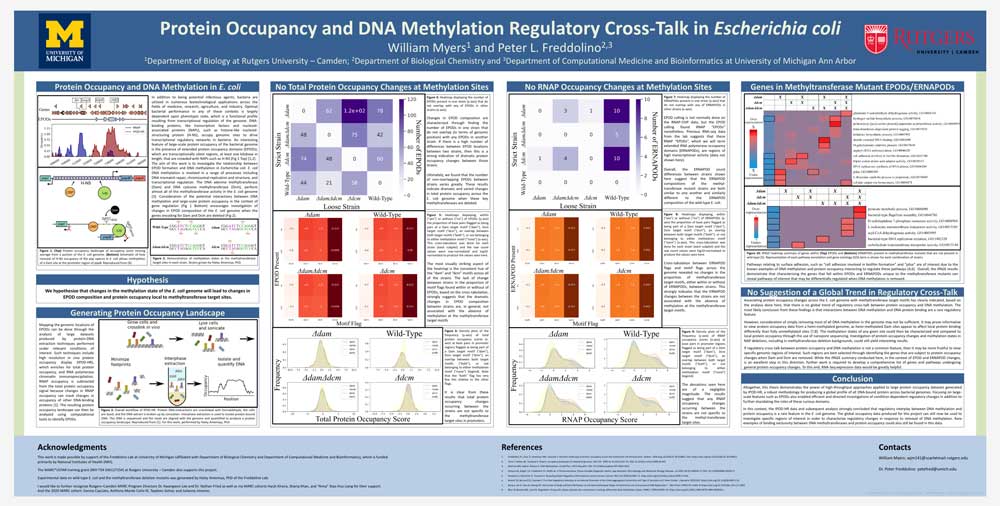William Myers ‘21
Major: Biology
Affiliation: RU MARC U-Star Program
Faculty Mentor: Dr. Peter Freddolino (University of Michigan)
Abstract
In addition to being potential infectious agents, bacteria are utilized in numerous biotechnology applications across the fields of medicine, research, agriculture, and industry. Optimal bacterial performance in any of these contexts is largely dependent upon phenotypic state, which is a functional profile resulting from transcriptional regulation of the genome. DNA- binding proteins, like transcription factors and nucleoid-associated proteins, are the primary driving forces of transcriptional regulatory networks in bacteria. Of recent interest are protein- dense, transcriptionally silent regions of DNA extending a kilobase or longer that are termed “extended protein occupancy domains” (EPODs). Achieving a better understanding of how protein-DNA interactions adjust genome expression could introduce new genomic targets and molecular methodologies for synthetically optimizing bacterial strains for specific applications, or for suppressing the virulence of pathogenic bacteria. Mapping the regulatory networks of DNA-binding proteins can be done through the analysis of large datasets produced by protein- DNA extraction techniques performed under various conditions of interest. Two such techniques include high resolution in vivo protein occupancy display, which enriches for total protein occupancy, and chromatin immunoprecipitation, which can enrich for any specific protein of interest. EPODs can be identified by comparing the occupancy profiles produced by these extraction techniques. EPOD composition across the genome can then be compared between conditions to indicate what regions of the genome are undergoing dynamic transcriptional regulation under the imposed conditions. The physiological impact of these changes in EPOD composition can then be evaluated through follow-up experimentation. In Escherichia coli, another factor involved in transcriptional regulation is DNA methylation. There are some specific examples of regulatory cross-talk between protein occupancy and DNA methylation that suggest a genome-wide trend of interactions between these two regulatory elements. This investigation utilizes high-throughput computational approaches to identify and characterize interactions between protein occupancy and DNA methylation in E. coli.

